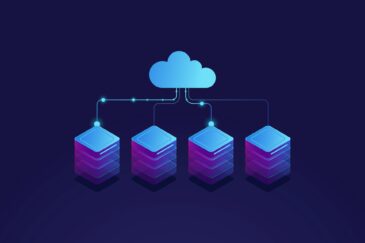A Step-by-Step Guide to NetSuite ERP Implementation

- February 8, 2022
- Jhansi Rani
- 0
Step 1: Plan
A NetSuite ERP implementation project might seem similar to other existing technology deployments, but the benefits of the cloud compared to on-premises are immediately visible in the process. There are five components of a cloud project: project definition, team selection, project design, project rollout, and project communications. All these elements must fall in place for project success. Evaluate the top NetSuite consulting companies and select the right partner that suits your needs.
NetSuite is a proven track record solution and switching from legacy on-premises systems to modern cloud applications is a complex but exciting journey that requires detailed planning. It includes defining the business goals, project scope, potential risks, budgets, and staffing requirements, and all mapped to a realistic timeline. Clearly define the role for each team member and their associated responsibilities. Find an executive sponsor who can remove obstacles and build support for the project within the organization. For a successful project rollout, identify which will include business units and geographies in the plan and what order. Communicate regularly with your team and the organization explaining the project status and the benefits.
Step 2: Implement
A NetSuite ERP implementation requires fewer tasks than implementing a traditional on-premises solution. You can eliminate hardware-related jobs, custom coding, software updates, and most testing and training activities. Cloud applications like NetSuite are focused on configuration instead of customization. However, NetSuite applications can extend when needed for additional functionality. With standardized processes and workflows, you can get up and running immediately. It’s not easy to get rid of your existing customizations, but having a lot of custom code can hold you back from getting advanced functionality and leads to an increase in costs. Minor tweaks to current business processes in the cloud can eliminate the need for custom code and reduce complexity.
Step 3: Verify
Check the accuracy and completeness of your work against project requirements. Verify the data quality and archive old data that you don’t need anymore. Legacy systems often have a lot of old data, but with a new cloud ERP like NetSuite, you need to archive the data that’s not migrated and preserve data integrity with read-only access. Check your workflows’ paths and decision logic, verify your security architecture and protocols, verify role-based access and privileges, and map responsibilities to roles. With detailed documentation and effective data migration, this is a checklist exercise.
Step 4: Prepare
After verification is done, make a list of final items to be addressed and ensure user readiness. Provide users with their usernames, passwords, and other access-related information. Inform how they can get assistance after the solution is rolled out. For organizational readiness, focus on change management and training and ensure that users are well-informed about the new ERP application. Shortlist the NetSuite consulting companies to partner with, negotiate to price and draw up detailed contracts explaining the scope of work. NetSuite offers advantages in the preparation phase over on-premises projects as it reduces the time, effort, and costs during this phase. Review the final plan with the executive sponsor, select a suitable go-live date, and communicate the decision across the organization.
Step 5: Deliver

Services
Products
Company
Copyright © 2024 Rite Software Solutions & Services LLP. All rights reserved.



